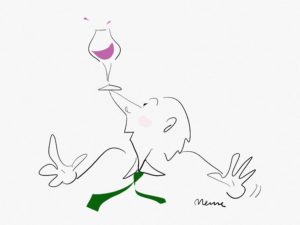
To judge from the conversations I have with friends, colleagues and Formaggio Kitchen clientèle, something called balance is considered a desirable trait to discover in a wine. It seems reasonable enough, since balance is something we value and try to maintain in many aspects of our lives. We strive to create a healthy work-life balance, eat balanced meals, maybe do a little yoga to help insure that as we get older we can still put our socks on without falling over.
There are other ways to think about balance, though — as moderation, for example. In this sense, balance involves not letting any one aspect of things assume too much importance or get too much attention.
Along these lines, we might guess that the reason there’s so much wine talk around balance is because wine exhibits a set of discrete primary components that combine to make a particular wine present as it does. We can summarize them as fruit, tannin, acid and alcohol.
You can think of body as a measure of how much or how little the wine resembles water. The less watery, the more body. Tannins give wine texture, which can make wine feel as nubby as a wool scarf or as sleek as a silk hankie. Acidity creates a perception of shapeliness and adds a perky counterpoint to fruit richness. Alcohol plays numerous roles besides buoying our mood, contributing both volume and what one might call — for want of a better term — punch.
Any wine tasting 101 course worth its salt will teach you to pay careful attention to each of these components — first separately, then together — as they strike up the tune that plays itself out in a given glass of wine.
One might arrive at the conclusion, as I once did, that the highest quality, most drinkable, most desirable wines are those that moderate each element until a perfect balance is achieved among them But that appealingly simple notion, doesn’t hold – at least not in every case. Here’s why.
Balance is really just another way of talking about symmetry, which is itself another way of talking about sameness. Symmetrical things share the same measure (the etymology of the word, after all), repeat a few similar motifs, make a virtue of perfect regularity. And while we might admire the architectural purity of a Parthenon or the rigorous Palladian geometry of a St Paul’s Cathedral, a city full of nothing but such structures would be rather boring, don’t you think? No soaring Gothic spires, no turretted Victorian whimsy, no Bilbao Guggenheim with its origami-inspired twists, bends, curves, humps and prows.
A dogged pursuit of balance is all right if all you want is the expected, but, as everyone who has ever watched a juggler or an acrobat knows, the really exciting stuff happens when balance is, for moment at least, in serious danger of giving way — threatening to dissolve into a tumble. It means that something unusual, and possibly risky, is being attempted, and you’re about to witness it.
Next time you’re tempted to diss a wine for committing the crime of imbalance, you might think about what surprising, or at least unexpected experience awaits you.
Failing that, try closing your eyes and thinking of the Sidney Opera House.